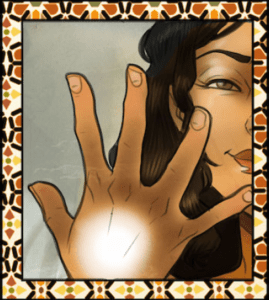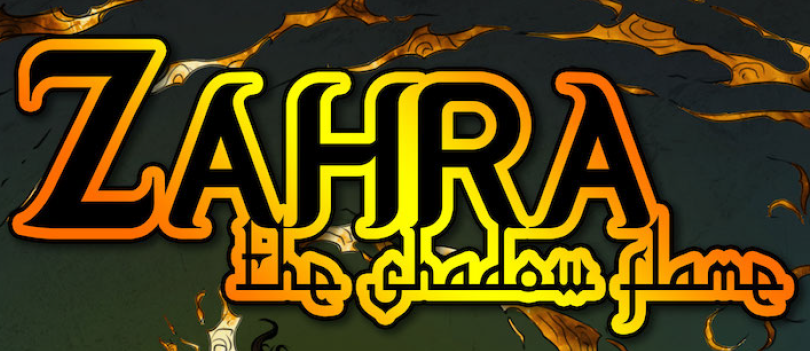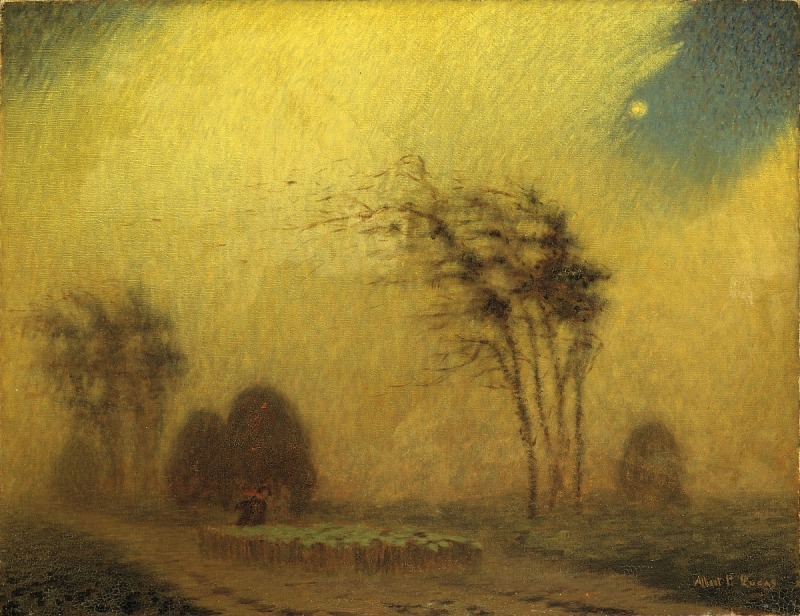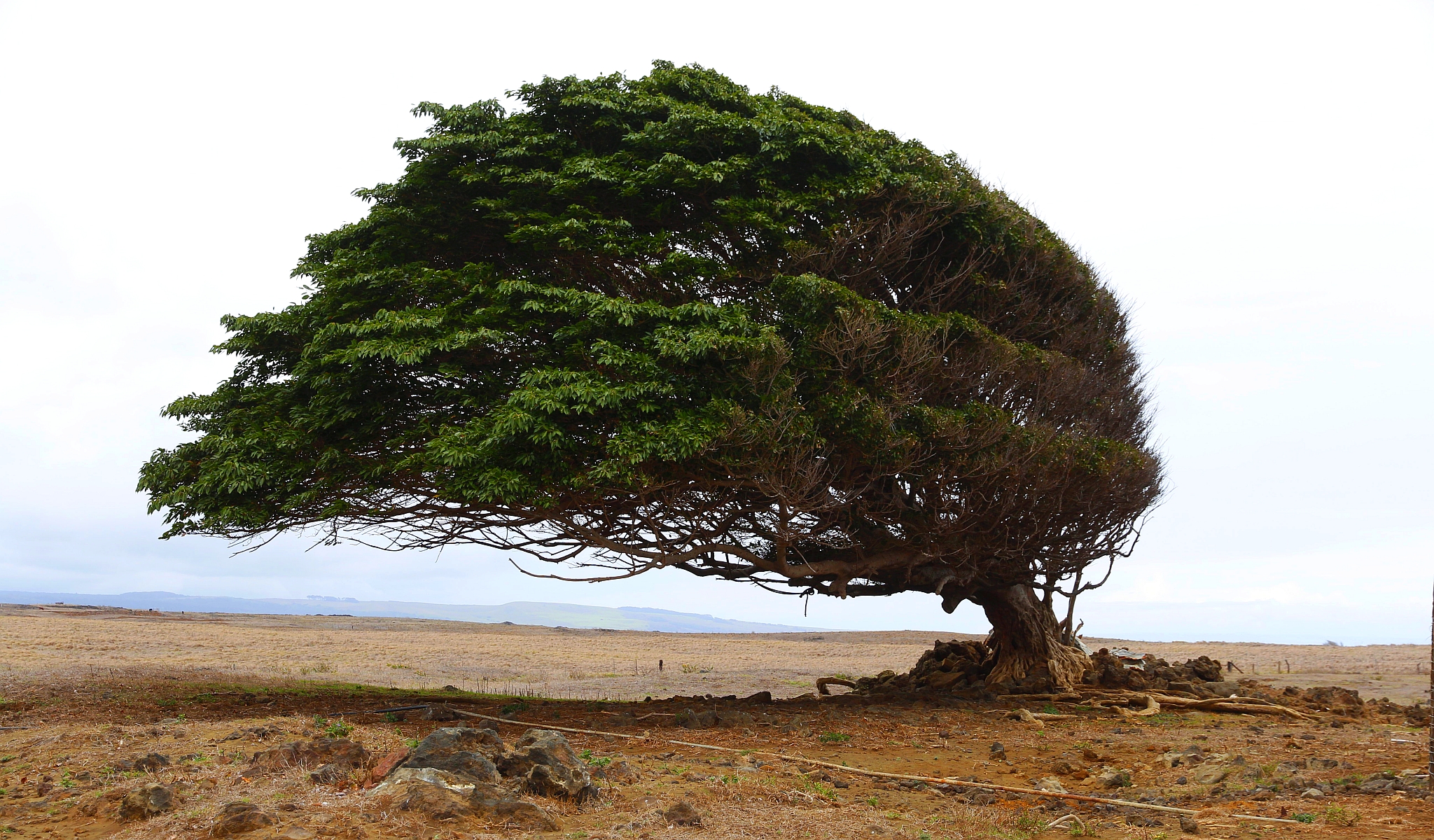Below, The Metaworker presents an exclusive interview with the creators of the new comic book series, ZAHRA THE SHADOW FLAME. Check out this companion post for a sneak peek of the first issue, and follow them on Facebook, Twitter and Instagram at @zahracomics for more!
RAKAN SINDI and KALI BAKER-JOHNSON met in the fall of 2012 as graduate film directing students at Chapman University. Rakan got Kali into video games, Kali got Rakan into comics, and before they knew it, they were collaborating on a short film about a young Saudi Arabian girl with otherworldly powers that was still struggling with the problems of the real world. The ideas behind that film morphed and grew into ZAHRA THE SHADOW FLAME, a story they realized needed to be told outside of film. In 2018 the duo established ADAM COMICS to follow the adventures of Zahra and feature other fantastical stories exploring how true heroism comes from unexpected people in unexpected places.
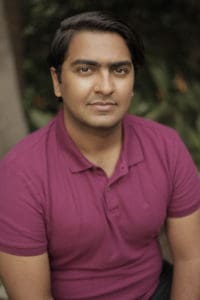
RAKAN SINDI grew up in Saudi Arabia and moved to the United States to pursue a career in film, his lifelong passion. He is a graduate of Chapman University’s MFA film program, emphasizing in Directing, and his thesis film, “Rahma,” won the Best Short Film and Best Director – Short Film Awards at the Big House Los Angeles Film Festival 2015.
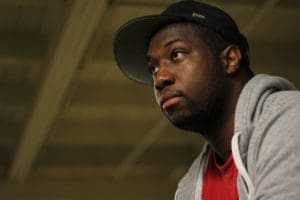 KALI BAKER-JOHNSON is a filmmaker, media educator, and life-long comic book fan. He is the director of the feature documentary film Thumbwarrior, as well as numerous award winning short films which have screened in film festivals around the world, as well as programs for domestic abuse education and centers for at-risk youth. He was a Directing Fellow at Chapman University’s film school, where he received his MFA.
KALI BAKER-JOHNSON is a filmmaker, media educator, and life-long comic book fan. He is the director of the feature documentary film Thumbwarrior, as well as numerous award winning short films which have screened in film festivals around the world, as well as programs for domestic abuse education and centers for at-risk youth. He was a Directing Fellow at Chapman University’s film school, where he received his MFA.
THE METAWORKER: Can you tell us a little bit about Zahra The Shadow Flame?
KALI: So Zahra the Shadow Flame is a comic book that Rakan Sindi and I created. The first issue was just released in July 2018. It’s about a young woman named Zahra Darwesh, growing up in the fictional country of United Arabia, who is the last in a long line of mystically powered women known as the Birth Weepers. It’s kind of a superhero story, kind of a coming-of-age story, and kind of an allegory about the plight of women in the Middle East and the world over.
MW: When/how did you become interested in comics? Who, or what, is your biggest inspiration?
KALI: My dad taught me to read with all his old Spider-Man comics from the 60’s, so I’m a lifer. And then I found the X-Men in elementary school and that became a really big influence of mine. As I got older my interests in comics changed and I read a lot of different stuff. Alan Moore, Brian Michael Bendis, Enki Bilal, Art Spiegelman. But of that stuff, David Mack’s Kabuki definitely had the biggest impact on me.
RAKAN: I never really read comics until I met Kali, but growing up I loved Dragonball Z. Goku was like my hero. And I can remember the first time I saw the movie Blade when I was a kid, it blew me away. It’s really what made me want to tell stories. Oh and, of course, Christopher Nolan’s The Dark Knight.
KALI: Yeah, if I start talking about film inspirations it’s a whole different list.
RAKAN: I also play a lot of video games and Metal Gear Solid was a big influence on us when we were crafting the story.
MW: What inspired the setting and the plot?
RAKAN: Well, I grew up in Saudi so I wanted to tell a story about where I was from and the beauty of it, but also the parts that are… not so good. But I also wanted to do something that had action and superhero elements, because I love that stuff. I was telling Kali about all these old legends and stories from Saudi, like the ancient kingdoms who 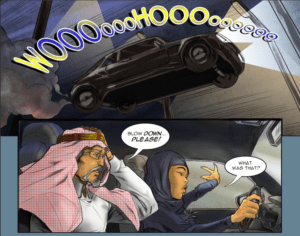 would bury their daughters as sacrifices, and we started talking about ways to bring all of that into the present to build a hero’s journey. And it kind of just came from those talks.
would bury their daughters as sacrifices, and we started talking about ways to bring all of that into the present to build a hero’s journey. And it kind of just came from those talks.
KALI: He also told me about more recent Saudi history and we merged that into it too. Like the Mecca girl’s school fire which we kind of incorporated into the first issue. And when we started writing this, women still couldn’t legally drive in Saudi. We actually had to change the script for the first issue when they changed the law. It was really exciting and stressful at the same time, but it actually worked out for the better.
MW: There are echoes of Kamala Khan from Ms. Marvel in Zahra. Was she an inspiration?
KALI: Not really. I was aware of the character, but I never read anything with her in it until after we’d written the comic. She’s a fun character though.
RAKAN: But when we first pitched the comic around, we mentioned Ms. Marvel’s success as a selling point.
MW: Why did you decide to give Zahra fire powers?
KALI: It’s funny you brought up Ms. Marvel because early on we actually changed her powers to avoid confusion with a different Marvel character. Initially, our heroine was gonna have sand powers, but I thought it was too similar to the X-Man Dust, who’s an Afghani Muslim woman who also observes hijab.
RAKAN: We tried a couple different powers for Zahra, before we settled on fire. Telekinesis, force-fields…
KALI: I think we just liked the elemental and almost mystical feel of fire. We didn’t want something that felt too sci-fi. And once we settled on fire we built the narrative so that her specific powers will have bigger story implications down the line.
MW: At what point did you decide that Zahra’s father couldn’t be a redemptive character?
KALI: Is he a redemptive character? I’m not so sure…
RAKAN: We talked a lot about Suliman and exactly what was going on with him while writing because we wanted to make sure he had his reasons for doing what he was doing and that they made sense to him. So he thinks he’s 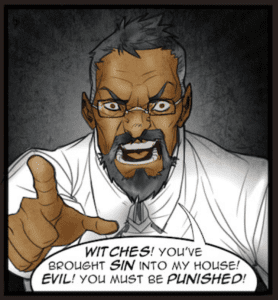 the hero, but he’s definitely the villain.
the hero, but he’s definitely the villain.
KALI: We didn’t want him to be a caricature though, like a moustache-twirling bad guy. We wanted to make sure he had depth and wasn’t simply a monster.
RAKAN: Yeah. He is a man with very strong beliefs. And even when he’s doing the absolute worst thing, he’s doing it for what he believes are the right reasons. As the series continues we’ll learn more about his views and where they all stem from.
MW: On your website, it says Zahra started as a film. Why did you feel it was ultimately a story best told through the graphic novel medium?
KALI: It was honestly more of an economic decision.
RAKAN: Yes. Kali and I met in film school and we worked on a short film called Rahma, which was kind of an inspiration for Zahra The Shadow Flame. And we loved the character and the story so we decided to continue it, so we wrote a feature screenplay together. But we realized that funding a superhero movie in Arabic that takes place in a section of the world that, at the time, didn’t have public movie theatres didn’t make a lot of sense. But a comic book medium fit what we were trying to do with the story and could reach people anywhere.
MW: Coming from film, what are the big similarities and differences in working on a graphic novel?
KALI: They’re actually really similar. I think a big reason I was taken with filmmaking at such a young age was that it seemed like a natural progression from comic books. Our comic script is like a mix between a screenplay and a shot list, which you’d make when directing a film. I think the biggest adjustment was working with a specific number of pages per issue and having to build scenes around your page count. That was a challenge.
MW: What was it like writing together? How do you keep yourselves on track and focused when you sit down to write?
KALI: I really like writing together.
RAKAN: Me too. Early on we’d just sit in a room together and make long outlines to track the story. And each time we’d get more and more detailed, down from our larger three-part story to how many pages for each scene. And we’d figure out as much of it as we could in that stage.
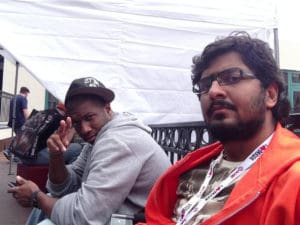
KALI: Yeah, and then we just split up and write it. I’ll finish a draft and then we’ll read it, sometimes show some friends, and then Rakan will do a brush-up draft. And then he’ll pass it back to me, and it keeps going until we’re both happy. And Rakan checks to make sure I get all the Saudi stuff right. I still haven’t been to the country.
RAKAN: Yeah, I really want to make sure that it’s authentic, from the buildings to the style of dress, which is sometimes difficult because our artists aren’t from the region either.
KALI: For staying focused, I found what works best for me is to write by hand in a notebook. No internet, no distractions.
RAKAN: I like to get out of the house and smoke some shisha.
MW: What was the process of finding an illustrator and colorist for the comic? What was it like to work with an artist to translate this story into a graphic novel?
KALI: It was actually pretty easy. I found a group on DeviantArt for comic book artists looking to work and messaged Davide Tinto, who is our illustrator. At first we just needed some concept art and then we hired him back to do the actual issue. Our colorist, Michelle Montrose, we met at a networking event for writers and artists at Comic Con in San Diego. She also did some concept art for us and then we hired her to letter the comic. We had a different colorist initially who ended up dropping out before he started any pages. We thought Michelle could fill the void since she’s mainly an oil painter.
RAKAN: We don’t have a lot of money, but we paid people. Which makes everything a little easier with the artists.
KALI: And we were learning as we went so I’m sure we tried their patience on a couple occasions. But getting the art back, as a kid who learned to read from comic books, it was a dream come true. The art’s incredible and it’s still surreal to think that it all came from words we wrote.
MW: What research went into writing this story? How much personal experience went into this?
RAKAN: Some of the story comes from the experiences of my female friends and the kinds of things they faced back home.
KALI: Yeah, I had to do some research. A lot of it was just using Rakan as a resource, but I also read up on Middle Eastern folklore. Actually, right after we shot the short film I had knee surgery and was bedridden. So while I was laid up I pored over One Thousand and One Nights and some other stuff and came up with all these ideas for additional characters and locations. And then I called Rakan and we went through it all and that’s how we really expanded the contained situation of the short film into a comic book universe. So the injury kind of helped.
MW: What was your favorite panel to write and why? Which was your favorite to see come alive with the illustrations?
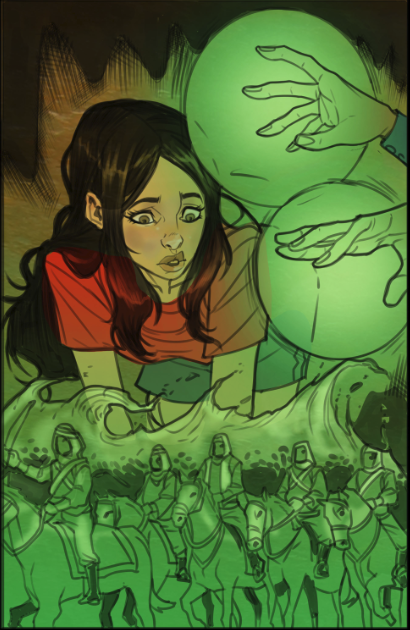
KALI: Page 4. I wasn’t really sure it was going to work when I wrote it, like if the idea of a time-lapse was going to come across. But I think it came out pretty incredible. I also really like a lot of the smaller character interaction pages like 14 and 23. I think Davide and Michelle did a great job capturing the quiet intimate moments between characters that really make the comic sing.
RAKAN: Pages 10 and11, the double spread page that explained the history of the Birth Weepers. I didn’t expect that it would look as good as it does. There were so many elements that needed to be drawn in order to tell the complex history of the Birth Weepers, especially since Duha is telling it by using her powers. I think both Davide and Michelle did an amazing job bringing that moment to life.
KALI: I’ll also say, there’s a couple pages coming up in issue 2 that I’m particularly proud of. My hope is that we keep pushing ourselves visually, issue by issue.
MW: Did you learn anything from writing your comic book? What surprised you?
KALI: I learned I love writing comic books. Honestly, I didn’t expect to enjoy the process this much. It’s been incredibly fulfilling creatively.
RAKAN: But it was really challenging. The format is very different from writing a screenplay, which I’m more familiar with. But it really helped strengthen my thought process as a filmmaker because I had to describe each separate panel like I would when storyboarding a film.
MW: Tell us a little bit about the process to get Zahra published.
RAKAN: At first we were talking with a video game company that was interested in making comics. We put together a treatment deck with some concept art and they were onboard, but things fell apart in negotiations. It was a long process that took a lot out of us so we decided to self-publish it on our own terms and on our own schedule.
KALI: Part of the reason we liked the game company is that they were based in the Middle East and we wanted the region to have some ownership over the comic, so it didn’t appear to simply be a Western company talking about how things are in the Middle East. So when we self-published we chose to call our company Adam Comics because it was a word that was used the same in English and Arabic, and our logo includes the English and Arabic 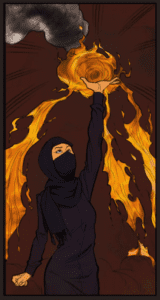 spellings of the word.
spellings of the word.
RAKAN: But the bigger reason is that Adam is my son’s name.
MW: What else are you involved with when you’re not busy working on Zahra?
RAKAN: I am a post-production coordinator for television. I currently work on Gotham but we’re heading into our final season this year. I’m also working on directing my own independent feature film this year.
KALI: Same with me. I have a small relationship drama that I wrote that I’m working to get off the ground soon. But by day, I’m a video editor for marketing materials. I also recently released a mini-comic on my website called L.A. Burning. It’s very different than Zahra, and I plan on doing more with that in the future.
MW: What are three books/comics you think everyone should read and why?
KALI: Hmmm… I don’t know if I can think of anything that everyone should read. And I haven’t read a lot of the classics so I’m probably a little ill-informed. Three of my favorite reads are A Yellow Raft in Blue Water by Michael Dorris, House of Leaves by Mark Z. Danielewski and the aforementioned Kabuki comics by David Mack.
RAKAN: “My Hero Academia” from Shonen Jump is a must! “Aquaman” by Geoff Johns from the New 52 DC Comics. And my all-time favorite is The Killing Joke by Alan Moore.
MW: Where do you see this narrative going next?
RAKAN: Well, issue 2 is on its way and we have another 22 issues planned so we’re just getting started.
KALI: Without spoiling too much, things get very dark for Zahra very quickly as she’s kind of thrust into this dangerous underbelly of United Arabia and struggles to find her place in it. Our story is really about Zahra figuring out how to fit into a world where she’s the last of her kind. She’ll try a bunch of different ways of doing that and they probably won’t all work out. She’s going to meet one character in particular very soon that will really challenge Zahra’s perception of herself. We’ll also be learning a lot more about the history of the Birth Weepers and where all the other mystical creatures of lore now find themselves in the modern age. But a lot of Zahra’s story comes down to this familial and generational conflict with her father, and that’s a struggle that we never stray far from.
MW: How can readers find out more about Zahra and where can they find her on social media?
RAKAN: AdamComicsCo.com is our official website, that’s the best place to go for news, updates and extra content. It’s also where you can get the first issue for FREE. You can also find us on Facebook, Twitter and Instagram at @zahracomics. And we were just featured on ComiXology.com.
MW: Anything else you’d like to add?
RAKAN: The Arabic translation for issue 1 will be out very soon!
KALI: And with the release of Issue 2 this Fall we will be launching a Kickstarter to raise funds for the production of issues 3-8. So please follow us on social media and help spread the word! We need to build an audience from the ground up!
